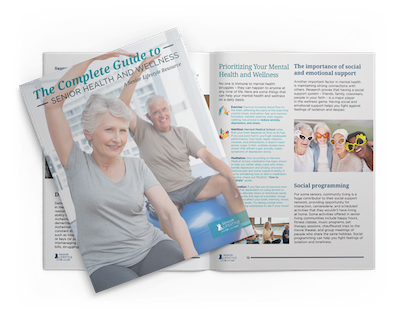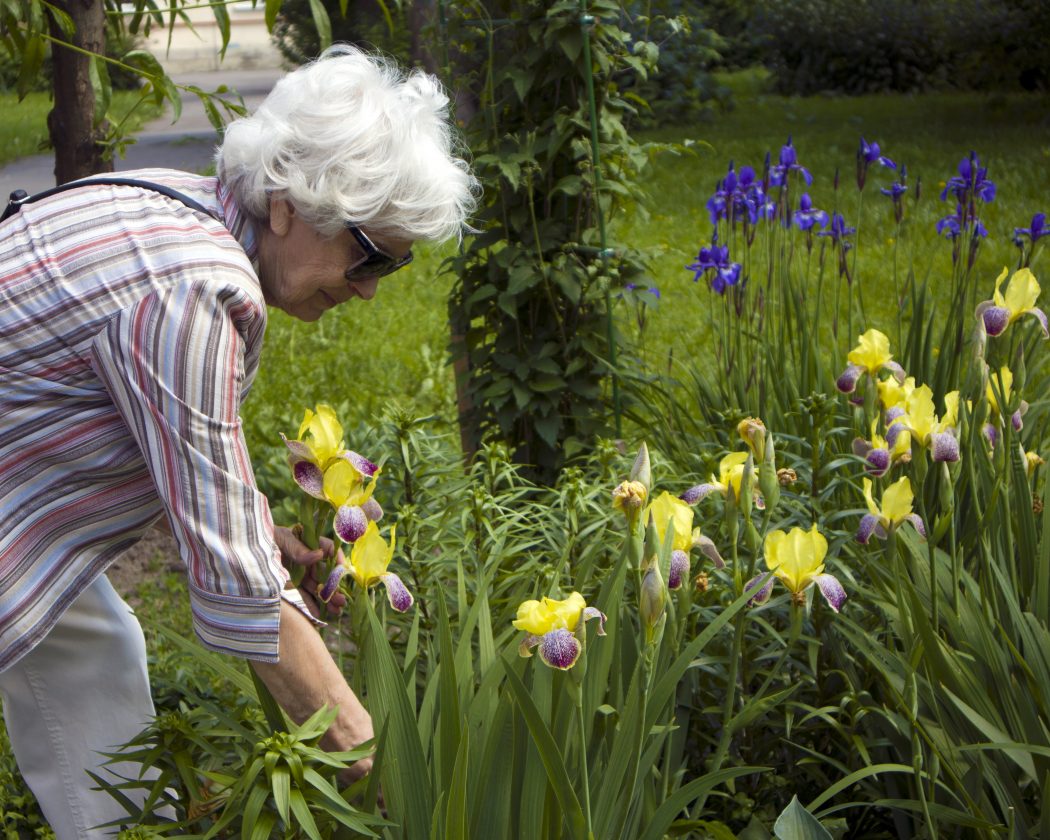Vision loss can be as low-level as blurriness and as severe as blindness. There are no generally accepted definitions for “low vision,” “vision loss” or “visually impaired.” However, the U.S. Centers for Disease Control and Prevention say that about 12 million people over age 40 are visually impaired, including 3 million with corrected and 8 million with uncorrected impairment.
Older Americans are likely to have more vision loss because of factors such as:
- Cataracts, which causes blurred vision
- Diabetic retinopathy, which causes spotty vision
- Glaucoma, which leads to peripheral vision loss
- Macular degeneration, which leads to central vision loss
But vision loss shouldn’t mean the end of activity for seniors. Indeed, there are a number of ways low-vision seniors can stay active and healthy, and ways for caregivers to support them. Here’s a list of 8 low-vision activities for seniors.
8 Activities for Vision-Impaired Seniors
- Arts and crafts. Knitting or other needlework is typical of seniors, but there are other options. Sculpt with modeling clay or sculpting sand, make collages with old magazines, or paint in bright, bold colors.
- Audiobooks and podcasts. Audiobooks allow you to listen to almost any book. You can borrow them from the local library, buy them from a retailer, use the free National Library Service home delivery, or find them online for free at sites like LibriVox or Open Culture. Podcasts about news or other favorite subjects are available too, from Spotify, National Public Radio and others.
- Fitness. To boost mood, circulation and overall health, try chair yoga or other low-impact, safe exercises.
- Games. Card games offer a great variety, and you can still play dominoes provided the set has large dots. Other board games can still work for you.
- Household activity. Tidying up seems more a chore than an activity, but you can enjoy the feel of folding clothes, sorting silverware or winding yarn into balls.
- Music. Play your favorite songs or albums, or find a radio station that plays your favorites. Explore online music services, such as Spotify or Pandora, which features specialized music stations.
- Nature. Take a walk outside for fresh air and sunshine. As you are able, try gardening in a windowsill or a small garden
- Pets. Petting furry animals and playing with them isn’t just fun, it can be a soothing activity.

Download The Complete Guide to Health & Wellness for Seniors
As people grow older, their health and wellness needs change. Read our eBook, “The Complete Guide to Health & Wellness for Seniors” for everything you need to know about staying healthy and happy as we age.
Download the GuideHow You Can Support Low-Vision Seniors
If you’re caring for an aging parent or other senior, it’s important to remember that they may need supervision, especially when exercising or moving around a house. Here are some ways you can help support their activity so they can feel more fulfilled.
- Accentuate contrasts throughout the home. Use tape or paint in contrasting colors so your loved one can find things throughout the house, such as switch plate covers and the thermostat. Also, use plates, cups and utensils in a contrasting color. Do the same for towels in the bathroom.
- Clear the clutter. Keep their living space clear of obstacles and hazards. Remove throw rugs and unnecessary furnishings that clutter walking paths to help eliminate tripping hazards.
- Improve lighting. Adding more lamps and lighting throughout the house will help your loved one use their remaining vision effectively. Install night lights in key places.
- Organize the house. Sort through cupboards and specify exact locations for important things. Set up consistent places for mail, keys, and other important items.
- Reduce glare. Adding blinds or shades to windows will be helpful. Also, have your loved one wear anti-glare sunglasses and visors outdoors.
- Work with a low-vision specialist. These specialists have the knowledge and experience to create personalized solutions for a senior’s specific needs. These specialists are also familiar with resources for obtaining low vision aids and can instruct their clients on how to use them properly.
Most important of all, though, seniors should feel a support system around them as they face visual impairments. Encourage your loved one to remain active with their friends and stick with the hobbies and pastimes they enjoy. Offer to accompany or assist them with these things so they can be more confident in their ability to participate.
How Senior Lifestyle Cares for Seniors of All Abilities
Senior Lifestyle communities provide safety and security for all seniors, whether you opt for Independent Living, Assisted Living or Memory Care. We create better lifestyles through innovation, personalized care and compassion for the people we serve each day. Residents can make use of our award-winning amenities and services, which include nutritious and tasty meals, attentive security and staff, and engaging social connections.
Find a community around the nation. Contact us today for more information.

